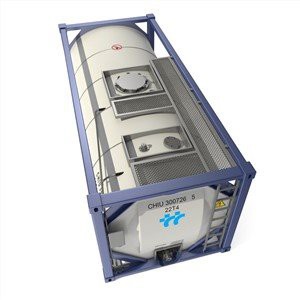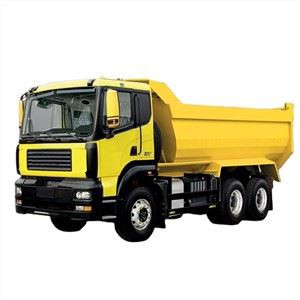Understanding IMT Trucks: Features, Benefits, and Practical Applications

Introduction to IMT Trucks
IMT trucks, also known as Integrated Mobile Truck, represent a vital segment in the realm of commercial vehicles designed for heavy-duty work. These trucks are not only about moving goods from A to B; they incorporate advanced technology and features designed to enhance productivity, safety, and cost-efficiency. In this comprehensive article, we will explore the numerous aspects of IMT trucks, their applications, benefits, and practical tips for choosing the right model for your needs.
The Evolution of IMT Trucks
Historical Context
The evolution of IMT trucks can be traced back to the rise of commercial transportation in the early 20th century. As businesses grew, the demand for efficient transport solutions increased, leading to innovations in truck design and functionality.
Technological Advancements
Modern IMT trucks feature innovations such as GPS tracking, advanced fuel efficiency systems, and enhanced payload capabilities. Manufacturers continuously improve these vehicles by integrating user-friendly interfaces and automated systems.
Key Innovations in IMT Trucks
- Smart Navigation Systems
- Fuel Management Technology
- Telematics for Fleet Management
Types of IMT Trucks
Light-Duty IMT Trucks
Light-duty IMT trucks are designed for smaller jobs and urban deliveries. They are easy to maneuver and suitable for businesses needing efficient transportation in crowded areas.
Medium-Duty IMT Trucks
Medium-duty IMT trucks are versatile, providing a balance between payload capacity and maneuverability. They cater to various industries, including construction, delivery services, and municipal applications.
Heavy-Duty IMT Trucks
Heavy-duty IMT trucks are built to handle substantial loads and challenging terrains. They are commonly used in industries like construction, mining, and long-haul freight transportation.
Benefits of Using IMT Trucks
Enhanced Fuel Efficiency
IMT trucks are engineered for fuel efficiency, helping businesses reduce operational costs. Technologies such as hybrid systems and improved aerodynamics contribute to significant fuel savings.
Improved Safety Features
Safety is a top priority in the design of IMT trucks. Features such as collision avoidance systems, lane departure warnings, and adaptive cruise control enhance driver safety and reduce accident rates.
Increased Productivity
IMT trucks enable businesses to optimize their operations and reduce downtime. Advanced logistics systems streamline routing and scheduling, leading to time savings and improved service delivery.
Practical Examples of Productivity Boost
| Example | Description | Impact |
|---|---|---|
| Dynamic Routing | Utilizing real-time traffic data to plan routes | Reduced travel time by 20% |
| Load Optimization | Using technology to ensure maximum payload | Increased delivery efficiency by 30% |
Choosing the Right IMT Truck
Assess Your Needs
Before purchase, evaluate your business needs. Consider the volume of goods transported, delivery frequency, and types of terrain you will encounter.
Cost Considerations
Investing in an IMT truck involves more than just the purchase price. Consider operational costs, maintenance expenses, and potential resale value when making your decision.
Cost Breakdown
| Item | Estimated Cost |
|---|---|
| Purchase Price | $50,000 – $150,000 |
| Maintenance | $1,500 – $5,000 annually |
| Insurance | $1,200 – $3,000 annually |
Test Before You Buy
It is crucial to test drive potential models to assess comfort, handling, and visibility. An in-person evaluation will help you get a sense of the vehicle’s capabilities in real-world conditions.
IMT Trucks in Different Industries
Construction Industry
In the construction sector, IMT trucks are invaluable. They transport heavy materials and equipment to job sites, enhancing operational efficiency.
Logistics and Delivery
IMT trucks are indispensable in logistics, serving to streamline supply chain operations. Their capacity to handle various cargo types makes them ideal for distribution services.
Emergency Services
Many emergency services use specialized IMT trucks for quick response. These vehicles are designed to carry equipment and personnel efficiently in urgent situations.
Maintenance Tips for IMT Trucks
Regular Inspections
Conduct regular inspections of your IMT truck to catch potential issues early. This includes checking fluids, brakes, and tire pressure.
Scheduled Maintenance
Adhere to the manufacturer’s maintenance schedule, including oil changes, filter replacements, and other critical servicing tasks.
Professional Servicing
Whenever necessary, seek professional servicing to ensure comprehensive checks and repairs are conducted by qualified technicians.
Future Trends in IMT Trucks
Electric IMT Trucks
The shift towards sustainability has led to the development of electric IMT trucks. These vehicles reduce emissions and operating costs, presenting a new option for businesses.

Automation and AI
As technology progresses, automated driving systems for IMT trucks are on the horizon. These advancements promise to enhance safety and reduce human error in transportation.
FAQ Section
What is an IMT truck?
An IMT truck, or Integrated Mobile Truck, is a commercial vehicle designed for heavy-duty applications, featuring advanced technology for efficiency and safety.
What are the main types of IMT trucks?
IMT trucks are categorized into light-duty, medium-duty, and heavy-duty, catering to different business needs and applications.
How much does an IMT truck cost?

The cost of an IMT truck varies widely based on size and features, typically ranging between $50,000 and $150,000, excluding operational costs.
What industries commonly use IMT trucks?
IMT trucks are utilized in various industries including construction, logistics, delivery services, and emergency response.
How often should I service my IMT truck?
Regular maintenance is crucial. Refer to the manufacturer’s manual for scheduled maintenance, but a general guideline is every 5,000 to 7,500 miles or as recommended.

Are electric IMT trucks viable?
Yes, electric IMT trucks are becoming increasingly viable, with advancements in battery technology leading to better performance and lower operational costs.
